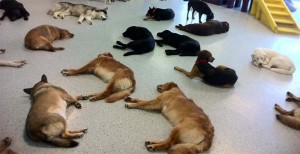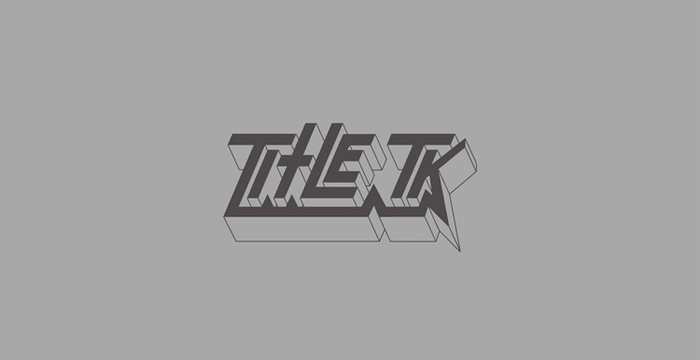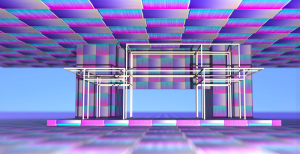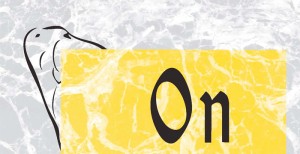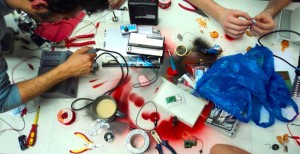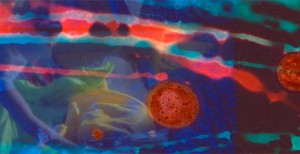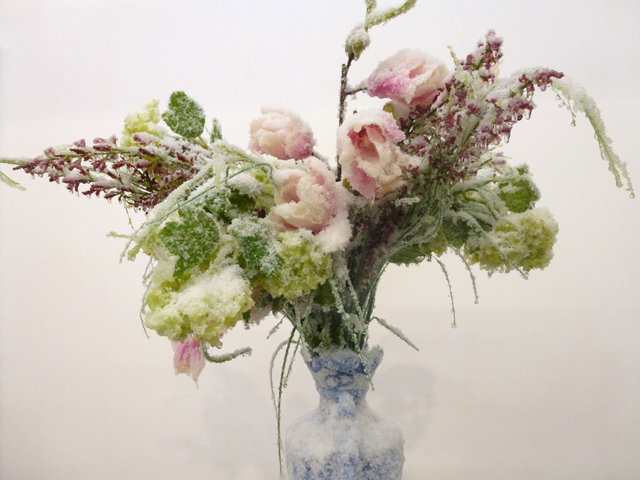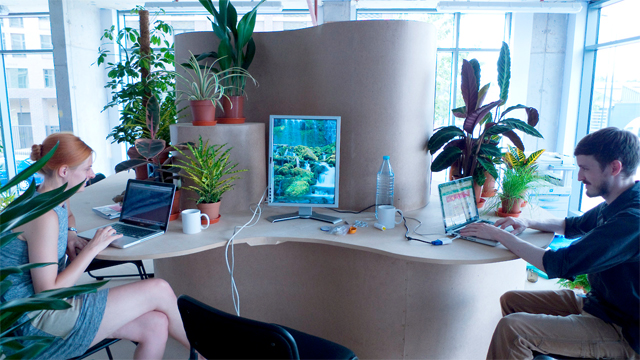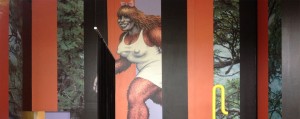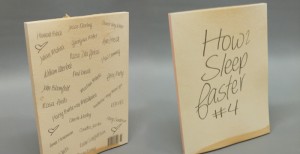“I think you get a lot of ideas here,” says Máni Sigfússon, looking straight ahead, arms folded, as he muses over his physical environment and its influence on creativity. We’re sat in the cinema of the LungA Festival HQ, in Seyðisfjörður, a remote fjord town in the northeast corner of Iceland, with a population of less than 700. A 27-year-old Sigfússon has just screened the product of a week-long video workshop by other young artists under the tutelage of himself and Lilja Birgisdóttir, often featuring droning soundtracks and the breath taking surroundings you could only imagine. We are, after all, in a town hemmed in by mountains with no horizon, capped by melting snow and scrawling white lines across them as pristine water rushes downward. It’s summer now, so rather idyllic. It’s always light and the stories of its only road access being closed for weeks at a time, for all the snow, are a distant reality.
But, it’s one that’s felt all too keenly for the people that live there all year round. For more than half of it Iceland descends into darkness, its capricious weather meaning that festivals have been cancelled and the rescue-services called in to evacuate attendants. An entire town has been wiped out by volcano, large parts of Europe’s airspace closed by Eyjafjallajökull in 2010; sheep are herded inside every winter. This is unforgiving terrain and you’d struggle not to surmise that its inhabitants’ dispositions are reflective of that.
With the country’s entire population sitting at around 320,000, the art community is proportionally small, the relationships between individuals a complex web of interconnectedness where I’ve been asked by someone, with a straight face, what the surname of my Icelandic friend living in the west of the island is because chances are they’ll know them. Of course, I can’t repeat it because the mere thought of an attempt at deciphering the Old Norse alphabet is enough to make my eyes glaze over, the fact that these sons and daughters take on their respective fathers’ and mothers’ names with the suffix “-dottir” or “-sson” making it all the more confusing.
Beyond this cultural peculiarity though, I’ll notice the differences, along with the similarities, of the Icelandic art scene as I’m shown around the capital, Reykjavík, later that week by a couple whose names are both variations of a base word meaning “raven” (they also happen to look pretty similar and are just as tall as each other) as it becomes apparent that people here too are being disenfranchised by big business and gentrification. Coffee houses and skate parks making way for hotels in the arty Downtown area, the old fishing port become a boardwalk as one of my companions points out, “and there’s some tourist shit”.
That’s an example of the deadpan, slightly cynical, humour I’ve noticed in general and echoed in that week’s Reykjavik Grapevine as it recounts Iceland filmmaker Friðrik fiór Friðriksson countering director Werner Herzog’s conviction, during a visit in the 70s, that there would never be the necessary pain in Iceland for the film industry to flourish: “we have pain on the brain, Mr. Herzog”. That torment resonates in the music videos of Sigfússon, who’s dark, slightly surreal expressions of alienation complement the moody drone and lonely folk of the artists they feature.
From what I’ve seen, there seems to be quite an artistic temperament in Iceland and it can also be pretty dark. What is it about this country?
MS: [laughs] Yeah, most of the things I do are dark, I think. Maybe it’s because it’s dark here, more than half of the time.
I noticed quite a stoical character among Icelanders and I couldn’t understand, with how developed and naturally rich it is here, what could be so hard to produce that. But then, I went for a walk in the mountains and I became so conscious of how vulnerable I am in this landscape.
MS: Yeah, exactly. The landscape kind of owns you. A lot of times, when tourists go hiking, not really hiking but in regular clothes and just like, ‘yeah, let’s walk up this mountain’, the Icelandic rescue team has to go and get them. It happens three times a week. Tourists think they can just walk up some mountain and then they’re stuck in some insane weather… You can’t really beat nature, especially not here.
Do you think it has an effect on people’s moods?
MS: Yeah, it definitely has. I have a theory on why so many bands and artists are in Iceland. It’s a short way to become fairly known, by doing something artistic because there are so many eyes watching Iceland. Being known in Iceland gets other people in other countries to notice you because a lot of people are into Icelandic music or Icelandic art and then find other things that they like. It becomes a good platform to start because, I guess, a lot of Icelandic people are doing big things, art or whatever. It’s a really good place to be a creative person because, as you said, it’s really developed and it’s also a really short way to get to the top or whatever. It’s a small ladder, basically.
How much do you think Björk had to do with that?
MS: Yeah, Björk and Sigur Rós get a lot of people watching Iceland.
I overheard an Icelander saying that, because of the country’s very small population, it’s hard to disappear, so you become quite introspective and that can also be quite oppressive.
MS: Yeah, you also make, like, a person. The people around you, you see them so often because you attend similar things. A lot of the people that are here [at LungA], I see them constantly; at concerts and art shows and school, coffee houses and bars and, yeah, I think, because you’re one out of a sea of people, you’re just one out of a fairly big group, you become kind of like a character [laughs].
Like ‘scenious’? When there’s a small group of people who work together and it produces better outcomes by association, than you would if you were working in isolation.
MS: Yeah probably. And I think that, also, it’s so connected that it’s also good motivation and inspiration. Because if you’re in that scene, everybody is doing something and, because of that attention, that motivates people to do more, maybe, and do bigger things. There are so many people that have made it out of so few people and people see that as a possibility. Where in other places, like in Japan or something, wanting to become a professional painter is probably a much more extreme dream there than here.
A lot of the works I’ve seen at LungA, span across performance, video and music. There’s been less focus on painting, or traditional forms of art, which is interesting. Especially as a place that, despite it’s high rate of digital connectivity, doesn’t seem to have embraced net art so much. It’s interesting that that interdisciplinary approach happened independently of net culture.
MS: I think it’s because it’s a small scene, maybe. My friends do music, one paints and one does 3D stuff or whatever. People just mix it together because they have friends that do other things. Really few people are doing traditional things, like painting and stuff, and I think it’s just because it’s a small group just trying things out.
People here keep reminding me that this isn’t all of Iceland; that here it’s just a very small clique of people who are arty. What’s the attitude towards art in the wider community?
MS: I think Icelanders are really open to art of all sorts. I’m not sure, though, I live in a small community. I live Downtown and l go to different bars, not fancy bars. I’m not sure how it is in the suburbs but yeah, people are open-minded.
You were talking about the community being quite small. Your colleague in the video workshop Lilja, her brother is in Sigur Rós?
MS: Yeah. Her brother is Sigur Rós’ front man, singer [Jonsi Birgisson]. And actually her sister is my brother’s wife [laughs] and she is an artist that does video and all sorts of stuff and is, like, a working artist. Lilja is too and her brother is as well, like a professional musician, and my brother is also a professional musician. He’s in a band called Sin Fang. My mother is a tailor and my dad is a photographer, so for me art has always been there, basically. For me, it’s not so strange.
It seems like, in a global context, Iceland has kept quite regional in its creative aesthetics.
MS: Yeah, I’m not sure why that is. As you said, we have a lot of Facebook users. And a lot of really bad TV shows and everything that’s popular in America comes here. Icelandic Idol or whatever and the government is not that supportive of art. They’re cutting funds now…
I found that quite odd.
MS: It makes no sense because art is more of an income for the country than fishing, so I don’t know why they would cut that. I think it’s really divided though. I think there are a lot of people that are not into art at all and just study business. People think that it’s a good thing to cut artist’s salaries because they feel like they’re wasting money or something but they don’t think that everything is designed or made by someone. They’re like ‘fuck art’ and then watch TV.
I’m not saying everything is art on TV but there has to be a director for everything and I don’t think they realise what artists do. When they think about art, they think it’s a weird painting or something. I think most of them, when they say “art salaries”, they don’ think about music or they just think that someone is getting money for doing nothing. I think it’s really divided, basically. There is a big gap and sometimes Iceland gives a wrong impression because foreigners tend to think that everybody in Iceland is an artist, or something in Sigur Rós videos.
Surely tourism is a major source of income for Iceland?
MS: Yeah and it probably has a lot to do with Icelandic art; a thing that makes people look into Iceland more and want to come here because they like Icelandic stuff by Icelandic people, not just the nature.
Successful artists are like the best advertisements you can have.
MS: Yeah, basically making people want to come and I don’t know why people want to cut that. [laughs] But there definitely is another kind of Iceland, not the one that people maybe think. **
Máni Sigfússon is a video artist who lives and works in Iceland.
share news item
